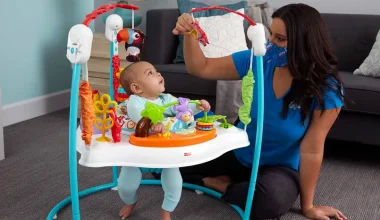Employees may take time off from work because of their serious health condition or the serious health condition of a family member. The Family and Medical Leave Act (a federal law ) protects them.
You can and should take care of any sick members of your family. The entire purpose of the FMLA is to give you and your family time together without worrying about your employment. Your employment will still wait for you when you return.
Work is one activity you can engage in while taking FMLA most of the time. You can work a second job or a side gig while taking FMLA from your primary employment. The only exception is if your employer has a regularly enforced policy prohibiting part-time or additional work.
What you can not do while taking FMLA is a little trickery. However, this article explains all you need to know.
Table of contents
- What is FMLA Leave?
- What is the Eligibility for FMLA?
- How much notice is required from an employee before taking FMLA leave?
- When Can You Not Do While on FMLA Leave?
- What is the Certification of leave for FMLA?
- What details must an employee include in their notification of the need for FMLA leave?
- Do you get paid for FMLA Leave?
- Can Employers Withhold Pay for FMLA Intermittent Hours Worked?
- Can You Lose Your Job by Taking FMLA Leave?
- How Does FMLA Work?
- Frequently Asked Questions
- Conclusion
- References
What is FMLA Leave?
FMLA is an acronym for Family and Medical Leave Act. This federal law protects employees of larger organizations who need to take medical time off from work.
Under the FMLA, employees can take 12 weeks of unpaid leave per calendar year. This leave must be primarily for their medical needs or to assist a member of their immediate family.
A worker might desire to use FMLA leave for one of the following causes:
- Having a baby or being close to a new baby
- child welfare
- caring for a service member who is disabled
Employee and employer eligibility for the FMLA are both factors.
For the Medical Leave Act to cover a corporation, 50 or more employees must commute within 75 miles of the business.
Employees must have worked for the company for the previous 12 months and have accrued over 1250 hours of work (airline employees are exempt from this requirement).
What is the Eligibility for FMLA?
Below are the eligibility requirements for FMLA. Employees must have:
- worked for at least a year
- put in at least 1,250 hours
- worked in a location where the business employs 50 or more people within 75 miles.
The FMLA’s guidelines for calculating compensable hours or work are used to establish whether an employee has accrued the required 1,250 hours of service.
Because of pregnancy difficulties, any time missed may reduce the twelve weeks of family and medical leave.
Under the FMLA, employees can take reasonable unpaid leave for specific family and medical reasons. This is to assist people in managing their work and family obligations.
It also aims to advance equal employment opportunities for men and women and satisfy the legal interests of employers.
Your ability to take FMLA won’t be affected if you miss work to serve in the National Guard or Reserve:
The regulations explicitly state that a break in service caused by an employee’s fulfillment of military obligations must be taken into account when deciding whether an employee has worked for 12 months or has the required 1,250 hours of service.
This clarifies the protections for our men and women serving in the military.
According to the Uniformed Services Employment and Reemployment Rights Act of 1994 (USERRA), an employee’s hours that they would have worked if it weren’t for their military service count toward the 1,250 hours they must have worked to qualify for the FMLA.
Similarly, the time spent in the military must also be considered when determining whether the employee has worked for the business for at least a year.
How much notice is required from an employee before taking FMLA leave?
Depending on the specific situation, employees must give notice when a leave of absence is required as soon as possible. According to the regulations, this will typically be within the time frame set by the employer’s customary and usual notice requirements.
An employee must give at least 30 days’ notice when a leave of absence is anticipated because of an impending birth, adoption or foster care placement, or scheduled medical treatment.
If giving 30 days’ notice isn’t possible, an employee must provide notice “as soon as practicable.” Employees must give notice as soon as possible no matter how long such leave is expected. According to the regulations, it must be workable for an employee to give notice of an expected need for leave on either the same day or the following business day.
However, in every situation, the timing of when an employee could reasonably give notice must consider the unique facts and circumstances.
Read Also: Pros and Cons of Being a Part-Time Student: Jobs to Explore in 2023
When Can You Not Do While on FMLA Leave?
The employer has the right only to accept an employee’s request for FMLA leave if they receive a complete and sufficient certification from them or authorization endorsing their healthcare provider to do so.
Below is a list of things you can not do when claiming FMLA protection.
You cannot:
#1. Take a vacation lasting over 12 weeks.
Be mindful of how much time you take off. The FMLA will no longer cover employees if they take over 12 weeks of unpaid absence. Since we are discussing federal law, there will be little leeway on issues like how long it takes.
Restrictions while on FMLA include embarking on a vacation over 12 weeks.
#2. Using FMLA for personal time
A major restriction while on FMLA is employees taking advantage of their unpaid time off. Good management and HR will have measures to verify that they are using their leave time appropriately.
This means that employees may not use their vacation time to extend weekends. Doing so regularly could raise suspicions of misuse.
There are ways for employers to maintain employee integrity when they are on unpaid FMLA leave.
#3. The FMLA cannot be used to bring a “bunk” lawsuit.
Some workers will always try to gain an advantage over their boss. Therefore, workers can hunt for chances to sue using the FMLA as a defense.
However, lawsuits with little or no standing are often dismissed in court. For instance, employees fired for committing actual wrongdoing while on FMLA leave may sue, asserting that they are entitled to protection under the FMLA.
This is untrue, though. You do not need to wait until an employee returns from leave to fire them if you find out
- they were not doing their work obligations
- lying about their time
- participating in other behaviors that would typically result in a firing.
#4. Take leave if you are a key employee.
Sadly, if the employer believes there would be a significant loss because of the key employee taking time off, the key employee may not seek FMLA leave.
That means you could deny a worker’s request for a leave of absence if they are a manager or hold a position that is always required to be filled. However, this is not wise, especially if an employee is involved.
Read Also: What Does Job Outlook Mean | I Bet You Really Need This
What is the Certification of leave for FMLA?
According to the laws, in most circumstances, an employer must make a medical certification request when an employee requests leave. This must be within five working days. Within five days after the start of the unplanned leave, the employer should ask for a medical certification.
If an employer discovers that certification is lacking, notify the employee and allow them to correct the problem.
According to the rules, the employer must specify in writing what additional details are required for the certification to be complete and sufficient. The employer must also give the employee a minimum of seven calendar days to correct the issue.
Although seven days may not be workable in some circumstances, the employee’s diligent and good-faith attempts may pay off.
Employers do not compel employees to provide their medical records. However, it is legal for an employer to ask an employee for a medical certification that includes enough supporting information to prove the existence of a severe health condition.
An employee must produce a comprehensive and sufficient medical certification to take FMLA-protected leave for a significant health condition.
Talking about medical certifications for FMLA, here’s how to become a medical assistant, and some of the best medical assistant school.
What details must an employee include in their notification of the need for FMLA leave?
The employee does not have to mention their rights under the FMLA when requesting leave for the first time for an FMLA-qualifying reason. However, the employee must give the employer “sufficient information” to inform them that an FMLA leave is required and when and how long it will last.
The regulations give Employees different directions regarding what makes up “sufficient information.” Depending on the circumstance, this information may include things like
- Whether the employee or a member of their family is receiving ongoing medical care
- Whether the employee is pregnant or has recently spent the night in the hospital.
- Whether the employee cannot perform the job duties because of a medical condition, and more.
Also, the rules mandate that an employee who requests leave for an FMLA-qualifying cause for which the employer has already granted FMLA-protected leave either mention the reason for the leave or the requirement for FMLA leave. In any situation, an employer should learn more about whether an employee requests FMLA leave by making the proper inquiries.
Do you get paid for FMLA Leave?
You might have wondered, as an employee, “Do you get paid for FMLA leave?”
You won’t get paid during an FMLA-qualifying leave. So, you won’t be able to take advantage of your regular income. Some companies have benefit plans that financially help workers on FMLA leave. But there is no governmental requirement for this.
You might have learned about FMLA when you started working at your employer because it is a mandated benefit. However, you only fully get how FMLA functions and what is covered if you need to use it.
Even though you’re not paid, your employer cannot make you report back to work if you have taken care of the paperwork, promptly delivered the required medical proof, and met the requirements for protection under the FMLA.
This is still true even if they want you to return to work part-time. This might only be the case if you comply with your commitments or the requirements for FMLA protection.
Read Also: 21 Best Winter Break Jobs for College Students to Make Extra Cash
Can Employers Withhold Pay for FMLA Intermittent Hours Worked?
The amount of pay withheld by your employer for intermittent FMLA hours you use, doctor’s visits, etc., will primarily rely on your employer, your compensation plan, and the policies they have in place.
For salaried employees who use FMLA hours, the employer may withhold pay for unworked hours. Because you won’t be punching into a time clock to record your intermittent FMLA hours, the employer cannot withhold pay from hourly workers for those hours.
However, many companies are aware of the irregularities in a regular employee’s schedule and may decide not to withhold any money from your salary to cover sporadic FMLA leave. This is because of the possibility that, as a paid employee, your weekly hours may fluctuate. The business may have a policy distinguishing between intermittent FMLA leave, where employees take only a few hours, and full-time FMLA leaves.
Can You Lose Your Job by Taking FMLA Leave?
The FMLA’s primary goal is to keep you employed while on necessary leave. You will still be employed when you return from your unpaid medical leave.
Your employer cannot base employment decisions, such as whether to promote or end you, on the fact that you took unpaid medical leave. If you report a breach of these regulations, your employer cannot legally take adverse action against you.
Employers may refuse reinstatement in specific circumstances. For instance, you hold a highly compensated, salaried position and were a vital employee without whom the company could not function.
To ensure you completely comprehend the procedure, inquire with your employer about this unusual situation before taking your FMLA absence.
It’s crucial to remember that when you return from an FMLA leave, your employer must offer you a position. It must not be your previous one.
According to the FMLA standards, the employee must be provided a chance comparable to their prior employment, particularly in terms of pay, benefits, and other aspects.
In clear terms, if you return from an FMLA leave from a management position, you should be allowed to take on another management position.
Your employer may compel you to shift to another open position if you find yourself when you need to take sporadic FMLA absences throughout the year. This occurs when an employee’s sporadic availability makes it impossible for the company to run.
FMLA safeguards your work status but acknowledges that some jobs could better suit sporadic FMLA demands.
Read this: 10 Perfect Jobs For Social People In 2024 – World Scholarship Forum
How Does FMLA Work?
While on leave for up to 60 days, some employers may demand that you use vacation days, sick days, or other types of paid time off that you have collected.
You can inquire about the company’s current leave policies with the human resources department of your employer. FMLA permits employers to insist you exhaust your paid leave before using FMLA time.
Some businesses may have policies that reward workers who choose not to participate in the corporate health insurance program.
Contrary to health benefits, these financial payments are not required to be made during an FMLA leave. You can keep receiving other benefits if you keep paying for them.
Be cautious while terminating your health insurance because FMLA leave does not allow you to re-enroll in health insurance when you return to your regular job. If you let the coverage lapse, you might only be able to sign up for health insurance again after the subsequent open enrollment period.
Remember that you should still be able to collect any bonuses you earned before taking an FMLA leave. An employer cannot use FMLA leave as an excuse to withhold your bonus.
Frequently Asked Questions
There should be no mention of work in any oral or written communications with an employee on leave. If you chat about work, you may owe the employee money for the time deemed to work. At worst, people can perceive your business communications as interfering with a leave of absence.
Certain employees are eligible for up to 12 weeks of unpaid, job-protected leave each year under the Family and Medical Leave Act (FMLA). It mandates that their corporate health benefits continue throughout the rest.
It is necessary.
A letter of authorization starts the approval procedure and guarantees that you have formal documentation of the leave you are granted for missing work for a specified period.
A leave of absence is when an employee can take time off from work for a protracted time. Depending on the request’s details, the time taken may be paid, unpaid, required, or voluntary.
Conclusion
Both your short-term disability plan and FMLA leave are concurrently usable. While short-term disability helps you replace part of your lost income, FMLA is intended to protect your job status.
You must discuss your choices with your employer because every company handles short-term disability differently. You might have to wait before filing a claim for short-term disability. According to your employer, your collected PTO may need to be used first.





